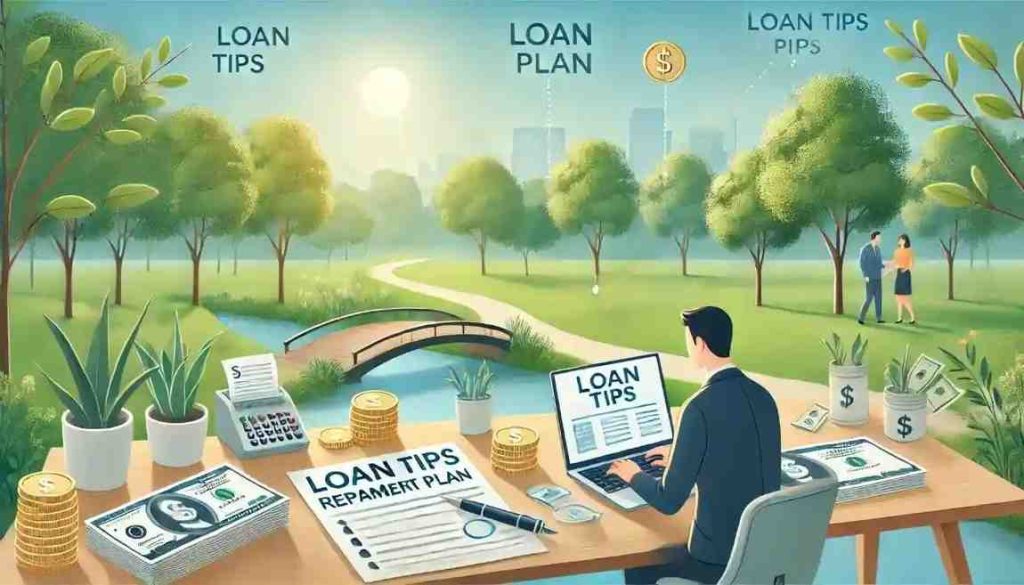Preparing for Repayment: Practical and Helpful Tips for First-Time Borrowers

Taking out a microcredit loan can be a life-changing step on the way to meeting ambitious business goals for entrepreneurs and small business owners. However, managing and negotiating the intricacies of loan repayment can be especially overwhelming and intimidating for those who are novice borrowers in this field. It is an indispensable part of careful and adequate preparation because it allows not only effective repayment of the loan but also plays a very important role in the long-term sustainability and success of the business itself. Moreover, such organizations as the Valdymas Entrepreneurial and Transformational Leadership Empowerment Program, popularly known as VETLEP, give their borrowers very valuable resources and support that help them more easily and confidently negotiate through these challenges. Here are some of the practical strategies for preparing to pay back loans, while focusing on financial discipline, planning, and mentorship, which are the basic ones.
1. Establish an Ideal Re-payment Schedule
A good repayment plan forms the basis of financial responsibility. It will begin by determining the total amount to be repaid, including the principal plus the interest. Dividing this amount into payable monthly installments, considering the repayment schedule of the loan, makes the payments manageable. Research proves that borrowers with a well-defined repayment schedule are most likely to be able to pay on time (Johnson & Johnson, 2021). Fluctuating-income businesses could use the flexible repayment conditions of VETLEPs as the foundation for any structured planning.
Moreover, the revenues that the business generates and the expenses that are incurred need to be closely monitored. This can be greatly facilitated through the use of multiple digital tools or trusted accounting software, such as QuickBooks or Wave, for instance (Smith, 2020). Accurate and detailed records allow entrepreneurs to anticipate cash flow problems and to invest their money in a way that allows them to pay back the funds effectively.
2. Establish an Emergency Financial Safety Net
Unexpected expenses or a drop in income may dramatically interfere with installment repayment programs, and it may cause debtors to struggle with the payment of their debt obligations. An emergency fund will be crucial in this respect—a financial cushion that would remarkably reduce the possibility of defaulting on payment obligations. Some financial advisors, such as Lee and Carter (2019), urge one to ensure saving an equivalent to three to six months of their loan installments to create a stable fall-back position. Likewise, debtors should also never slack in putting even a very small amount of money aside regularly, even during days when their financial outlook might seem stable and bright.
VETLEP works in the area of capacity building through providing financial management training for entrepreneurs. This sort of program would enable borrowers to set up an emergency fund and manage cash flow appropriately so that they may be able to keep up with repayment.
3. Maintain Open Communication with Lenders
It is especially important for first-time borrowers to be transparent and open with their lenders. If unexpected or unforeseen circumstances do occur, then it is strongly recommended that the lending institution be informed of these developments as soon as possible. Many organizations, such as VETLEP, are more than willing to restructure repayment schedules in order to better fit the specific needs and circumstances of their borrowers. Research studies have shown that maintaining proactive communication not only strengthens the relationship between lenders and borrowers but also significantly reduces the chances of loan defaults occurring (Brown & Green, 2022).
In addition, the borrowers should maintain good contact with the lenders by regularly updating them on the status of their business and finances. By keeping them abreast of developments, borrowers are able to instill confidence and explicitly show continued dedication to meeting repayment duties. Moreover, mentorship schemes provided by VETLEP help borrowers access advisors with relevant experience, where such advisors can serve as effective intermediaries for facilitating dialogue with lenders so that agreements reached are in the best interest of all parties.
4. Leverage Mentorship and Training:
Mentorship lies at the epicenter of empowering borrowers to face financial challenges. First-time borrowers are normally not experienced in debt management and therefore need to be guided by experts. VETLEP has been filling this gap through mentorship programs that link entrepreneurs with experienced professionals able to give one-on-one advice.
The training programs, in which the financial management and marketing strategies are included, are very instrumental in equipping the borrowers with practical skills necessary for enhancing their revenue generation capabilities, as well as improving their operational processes. A large body of research shows that entrepreneurs who actively participate in these training programs have a 25% higher chance of achieving substantial business growth and always repaying their loans promptly, as observed in the study by Anderson et al., 2020.
5. Nurture and Cultivate Financial Discipline
First-time borrowers need to ensure financial discipline to provide for regular loan repayment. A first-time borrower should put loan installments above discretionary spending. It will be easier to focus on this and reduce the temptation to divert funds if one creates a separate repayment account.
Budgeting also plays a very important role in the promotion of financial discipline among the people. Through the act of categorizing different types of expenses and systematically highlighting areas where costs can be minimized, borrowers are able to free up more resources toward the very important goal of repayment. The commitment of VETLEP to providing mentorship and comprehensive training underlines the critical importance of disciplined financial practices in ensuring long-term entrepreneurial success.
Conclusion
Repayment of a loan is part of showing financial responsibility and guarantorship toward the survival and sustainability of a business. Preparation, in respect of first-time borrowers, lies in careful planning with proper allocation of resources and use of an existing support system. Wholly in VETLEP’s holistic approach—a combined effort encompassing providing microcredit loans, matching available mentors, and general training—loan repayment after initiation allows borrowing to get a chance of surmounting all obstacles related to service repayment with the long run in sight for perpetual successfulness. The techniques pointed out above give any borrower the required strength and the capacity to not just survive but to develop a stronger enterprise and lead to giving to the general economic conditions surrounding each one’s jurisdiction.
Reference
- Anderson, R., Davis, K., & Wilson, P. (2020). The impact of financial literacy on small business success. Journal of Business Research, 15(3), 245–260.
- Brown, S., & Green, T. (2022). Effective lender-borrower communication strategies. Financial Insights Quarterly, 28(2), 178–190.
- Johnson, R., & Johnson, L. (2021). Repayment planning and its effect on financial sustainability. Economic Development Review, 10(4), 85–92.
- Lee, M., & Carter, H. (2019). Building financial resilience: The role of emergency funds in debt repayment. Finance Today, 34(5), 93–110.
- Smith, J. (2020). Digital tools for small business accounting. Entrepreneurial Trends, 19(6), 101–114.



